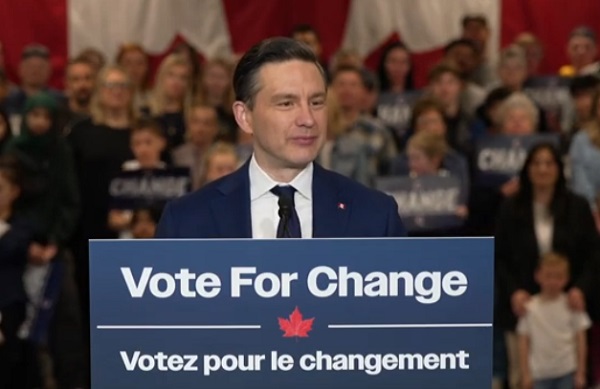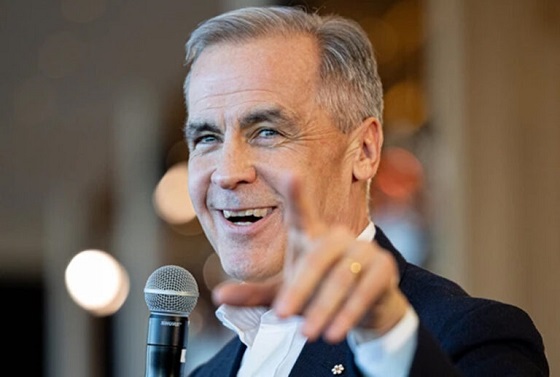Business
Don’t be fooled by high-speed rail

From the Frontier Centre for Public Policy
Rail advocates admit that trains can’t compete with airliners over long distances or with cars over short distances but claim there is a middle distance – supposedly around 150 to 800 kilometers – in which rail has an advantage over its competitors. That would be true only if the trains were almost 100 percent subsidized.
The Canadian government is considering spending $6 billion to $12 billion to introduce what it calls “high-frequency trains” between Toronto and Quebec City. Though some media reports have described these as high-speed trains (which generally means trains capable of going 250 kilometers per hour), they won’t be. Building such a rail line would easily cost $60 billion and probably much more.
Passenger-train advocates argue that Canada needs to join the international race to have the fastest trains in the world. But this is a race Canada can afford to lose because the country has something that is faster and far less costly: jet airliners.
High-speed trains were already obsolete in 1964, when Japan started operating its first bullet trains. Six years before that, Boeing had introduced the 707 and Douglas the DC-8, both of which cruised four times faster than the early bullet trains and twice as fast as the fastest trains in the world today.
Aside from speed, airliners also have a huge cost advantage because they don’t require a lot of expensive infrastructure between cities. While airports are infrastructure, the only infrastructure airliners really need are paved runways and perhaps a Quonset hut for ticket agents, baggage handling, and a waiting room—which is all that some of Canada’s more remote airports have.
Today’s big-city airports with huge concourses, shops, and jetways were built up over time and mostly paid for out of ticket fees. In contrast, rail advocates want taxpayers to put up tens of billions of dollars before a single wheel turns in the hope that trains that are slower than flying, less convenient than driving, and more expensive than both will somehow attract a significant number of travelers.
Rail advocates admit that trains can’t compete with airliners over long distances or with cars over short distances but claim there is a middle distance – supposedly around 150 to 800 kilometers – in which rail has an advantage over its competitors. That would be true only if the trains were almost 100 percent subsidized.
Air Canada and its competitors currently offer more than three dozen flights a day between Toronto and Montreal with fares starting at $118, less than 25 cents per passenger-kilometer. Fares on VIA Rail Canada averaged 68 cents per passenger-kilometer in 2022, and more than half of its costs are subsidized. People are simply not going to ride high-speed trains in large numbers if those trains cost far more than airlines, buses, or driving.
Amtrak’s only high-speed train, the Acela, collected fares of CN$1.80 per passenger-kilometer in 2022, and while Amtrak claims it covers its operating costs, all of its infrastructure costs are paid for by taxpayers. Amtrak brags that it carries more passengers in the Washington-New York corridor than the airlines, but cars and buses in this corridor carry well over 10 times as many intercity passengers as Amtrak.
The other argument rail advocates make is that high-speed trains will offer shorter downtown-to-downtown times than airlines in some markets. But most people neither work nor live downtown. Toronto and Montreal each have three commercial airports and residents are more likely to be near one of those airports than downtown.
Finally, rail proponents claim that high-speed trains will emit fewer greenhouse gases than cars or planes. But as usual they ignore the construction costs—that is, the billions of kilograms of greenhouse gases that would be emitted to build a high-speed rail line. It is likely that operational savings would never recover this cost, especially since it would be far less expensive to power jets and automobiles with biofuels.
One thing is certain: building high-speed or even high-frequency rail will require lots of workers. Far from being a benefit, Canada is currently suffering a labour shortage that is not expected to end soon. If the government decides to spend billions on a rail line, it will only make the costs of housing, cars, and just about everything else rise even faster.
China, Japan, and Spain have practically wrecked their economies by spending too much on high-speed trains. Just because other countries are foolishly building high-speed rail lines doesn’t mean Canada should do so any more than the country should spend billions on other obsolete technologies such as telegraphs, electric typewriters, or slide rules. Taxpayers should tell the government not to waste money on such boondoggles.
Randal O’Toole is a transportation policy analyst and author of Building 21st Century Transit Systems for Canadian Cities. (20 pages) March 12,2024.
2025 Federal Election
As PM Poilievre would cancel summer holidays for MP’s so Ottawa can finally get back to work

From Conservative Party Communications
In the first 100 days, a new Conservative government will pass 3 laws:
1. Affordability For a Change Act—cutting spending, income tax, sales tax off homes
2. Safety For a Change Act to lock up criminals
3. Bring Home Jobs Act—that repeals C-69, sets up 6 month permit turnarounds for new projects
No summer holiday til they pass!
Conservative Leader Pierre Poilievre announced today that as Prime Minister he will cancel the summer holiday for Ottawa politicians and introduce three pieces of legislation to make life affordable, stop crime, and unleash our economy to bring back powerful paycheques. Because change can’t wait.
A new Conservative government will kickstart the plan to undo the damage of the Lost Liberal Decade and restore the promise of Canada with a comprehensive legislative agenda to reverse the worst Trudeau laws and cut the cost of living, crack down on crime, and unleash the Canadian economy with ‘100 Days of Change.’ Parliament will not rise until all three bills are law and Canadians get the change they voted for.
“After three Liberal terms, Canadians want change now,” said Poilievre. “My plan for ‘100 Days of Change’ will deliver that change. A new Conservative government will immediately get to work, and we will not stop until we have delivered lower costs, safer streets, and bigger paycheques.”
The ’100 Days of Change’ will include three pieces of legislation:
The Affordability–For a Change Act
Will lower food prices, build more homes, and bring back affordability for Canadians by:
- Cutting income taxes by 15%. The average worker will keep an extra $900 each year, while dual-income families will keep $1,800 more annually.
- Axing the federal sales tax on new homes up to $1.3 million. Combined with a plan to incentivize cities to lower development charges, this will save homebuyers $100,000 on new homes.
- Axing the federal sales tax on new Canadian cars to protect auto workers’ jobs and save Canadians money, and challenge provinces to do the same.
- Axing the carbon tax in full. Repeal the entire carbon tax law, including the federal industrial carbon tax backstop, to restore our industrial base and take back control of our economy from the Americans.
- Scrapping Liberal fuel regulations and electricity taxes to lower the cost of heating, gas, and fuel.
- Letting working seniors earn up to $34,000 tax-free.
- Axing the escalator tax on alcohol and reset the excise duty rates to those in effect before the escalator was passed.
- Scrapping the plastics ban and ending the planned food packaging tax on fresh produce that will drive up grocery costs by up to 30%.
We will also:
- Identify 15% of federal buildings and lands to sell for housing in Canadian cities.
The Safe Streets–For a Change Act
Will end the Liberal violent crime wave by:
- Repealing all the Liberal laws that caused the violent crime wave, including catch-and-release Bill C-75, which lets rampant criminals go free within hours of their arrest.
- Introducing a “three strikes, you’re out” rule. After three serious offences, offenders will face mandatory minimum 10-year prison sentences with no bail, parole, house arrest, or probation.
- Imposing life sentences for fentanyl trafficking, illegal gun trafficking, and human trafficking. For too long, radical Liberals have let crime spiral out of control—Canada will no longer be a haven for criminals.
- Stopping auto theft, extortion, fraud, and arson with new minimum penalties, no house arrest, and a new more serious offence for organized theft.
- Give police the power to end tent cities.
- Bringing in tougher penalties and a new law to crack down on Intimate Partner Violence.
- Restoring consecutive sentences for multiple murderers, so the worst mass murderers are never let back on our streets.
The Bring Home Jobs–For a Change Act
This Act will be rocket fuel for our economy. We will unleash Canada’s vast resource wealth, bring back investment, and create powerful paycheques for workers so we can stand on our own feet and stand up to Trump from a position of strength, by:
- Repealing the Liberal ‘No Development Law’, C-69 and Bill C-48, lifting the cap on Canadian energy to get major projects built, unlock our resources, and start selling Canadian energy to the world again.
- Bringing in the Canada First Reinvestment Tax Cut to reward Canadians who reinvest their earnings back into our country, unlocking billions for home building, manufacturing, and tools, training and technology to boost productivity for Canadian workers.
- Creating a One-Stop-Shop to safely and rapidly approve resource projects, with one simple application and one environmental review within one year.
Poilievre will also:
- Call President Trump to end the damaging and unjustified tariffs and accelerate negotiations to replace CUSMA with a new deal on trade and security. We need certainty—not chaos, but Conservatives will never compromise on our sovereignty and security.
- Get Phase 2 of LNG Canada built to double the project’s natural gas production.
- Accelerate at least nine other projects currently snarled in Liberal red tape to get workers working and Canada building again.
“After the Lost Liberal Decade of rising costs and crime and a falling economy under America’s thumb, we cannot afford a fourth Liberal term,” said Poilievre. “We need real change, and that is what Conservatives will bring in the first 100 days of a new government. A new Conservative government will get to work on Day 1 and we won’t stop until we have delivered the change we promised, the change Canadians deserve, the change Canadians voted for.”
Automotive
Canadians’ Interest in Buying an EV Falls for Third Year in a Row

From Energy Now
Electric vehicle prices fell 7.8 per cent in the last quarter of 2024 year-over-year, according to the AutoTader price index
Fewer Canadians are considering buying an electric vehicle, marking the third year in a row interest has dropped despite lower EV prices, a survey from AutoTrader shows.
Forty-two per cent of survey respondents say they’re considering an EV as their next vehicle, down from 46 per cent last year. In 2022, 68 per cent said they would consider buying an EV.
Meanwhile, 29 per cent of respondents say they would exclusively consider buying an EV — a significant drop from 40 per cent last year.
The report, which surveyed 1,801 people on the AutoTrader website, shows drivers are concerned about reduced government incentives, a lack of infrastructure and long-term costs despite falling prices.
Electric vehicle prices fell 7.8 per cent in the last quarter of 2024 year-over-year, according to the AutoTader price index.
The survey, conducted between Feb. 13 and March 12, shows 68 per cent of non-EV owners say government incentives could influence their decision, while a little over half say incentives increase their confidence in buying an EV.
-

 2025 Federal Election1 day ago
2025 Federal Election1 day agoTrump Has Driven Canadians Crazy. This Is How Crazy.
-

 2025 Federal Election2 days ago
2025 Federal Election2 days agoCarney’s Hidden Climate Finance Agenda
-

 2025 Federal Election1 day ago
2025 Federal Election1 day agoThe Anhui Convergence: Chinese United Front Network Surfaces in Australian and Canadian Elections
-

 Automotive19 hours ago
Automotive19 hours agoHyundai moves SUV production to U.S.
-

 2025 Federal Election2 days ago
2025 Federal Election2 days agoStudy links B.C.’s drug policies to more overdoses, but researchers urge caution
-

 Entertainment1 day ago
Entertainment1 day agoPedro Pascal launches attack on J.K. Rowling over biological sex views
-

 2025 Federal Election2 days ago
2025 Federal Election2 days agoWhen it comes to pipelines, Carney’s words flow both ways
-

 2025 Federal Election1 day ago
2025 Federal Election1 day agoCarney Liberals pledge to follow ‘gender-based goals analysis’ in all government policy



